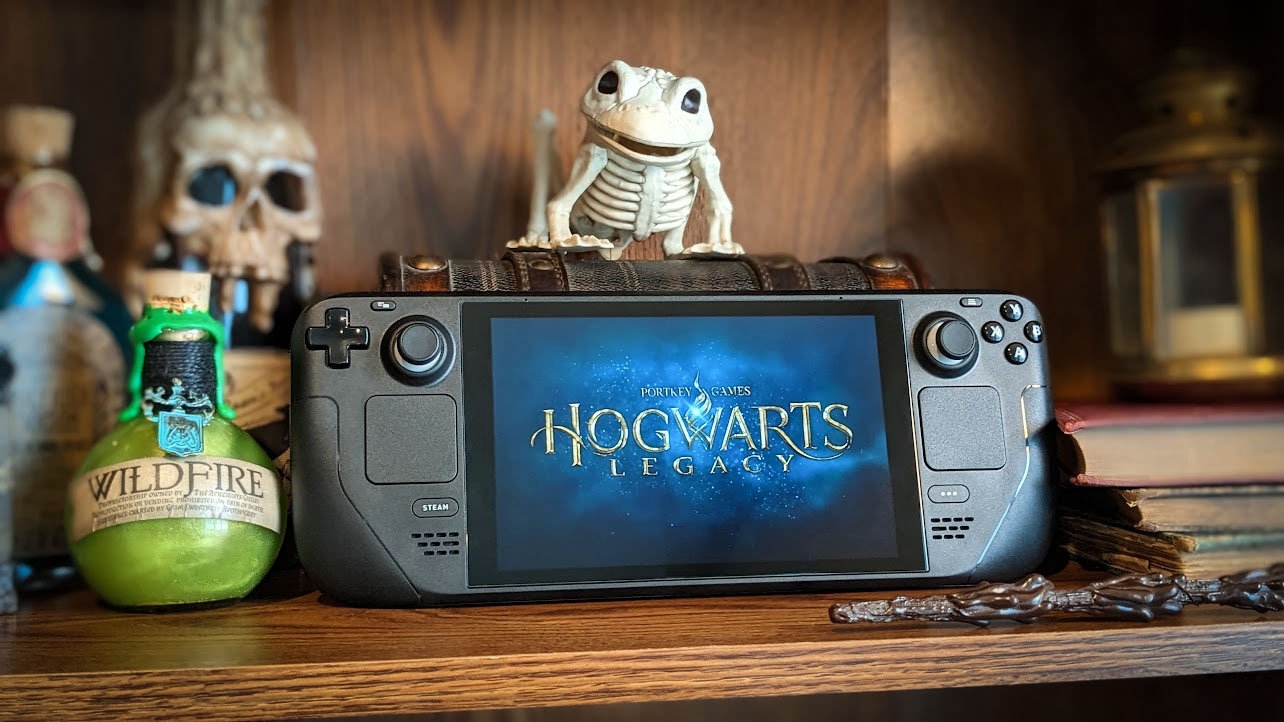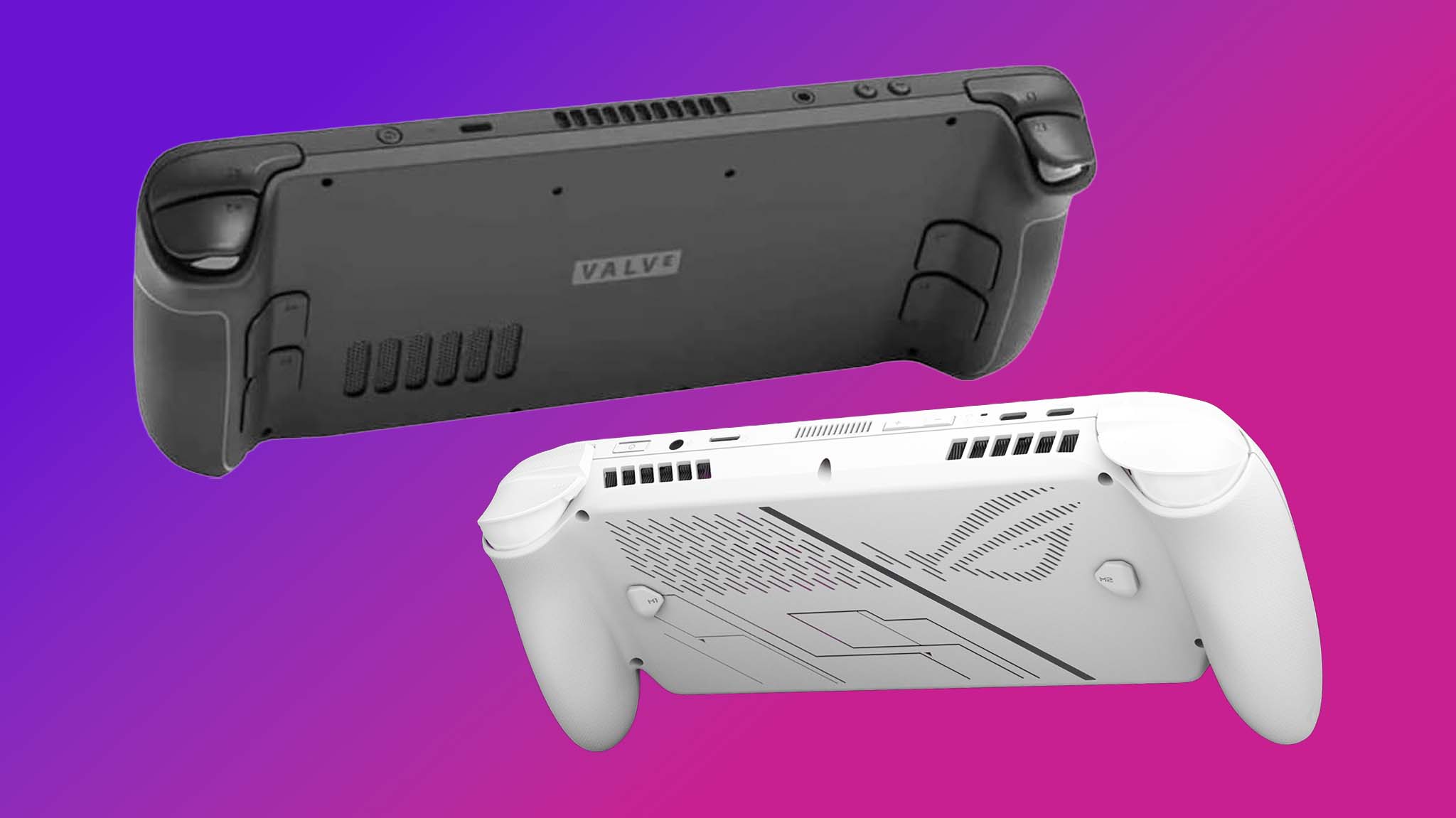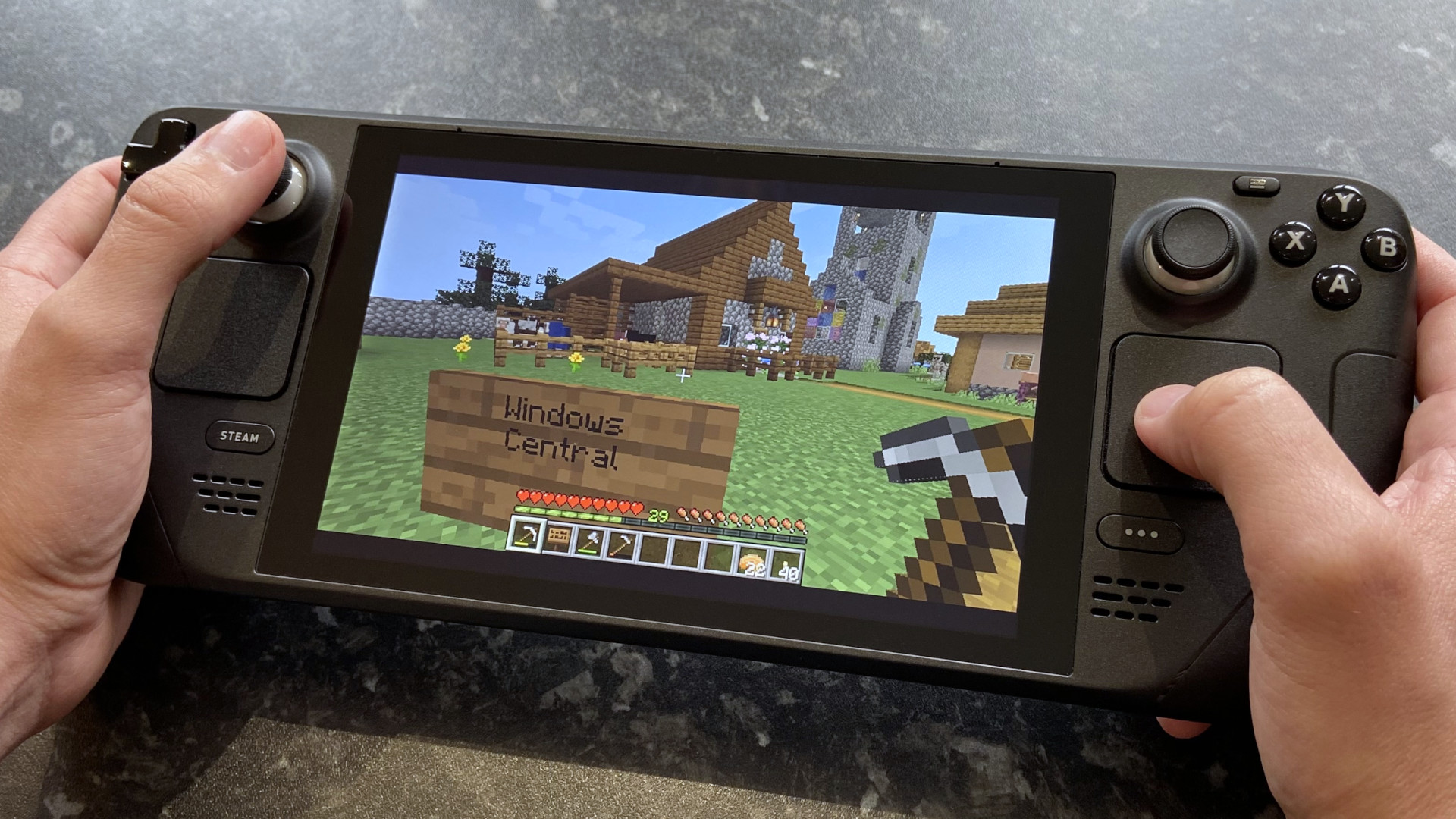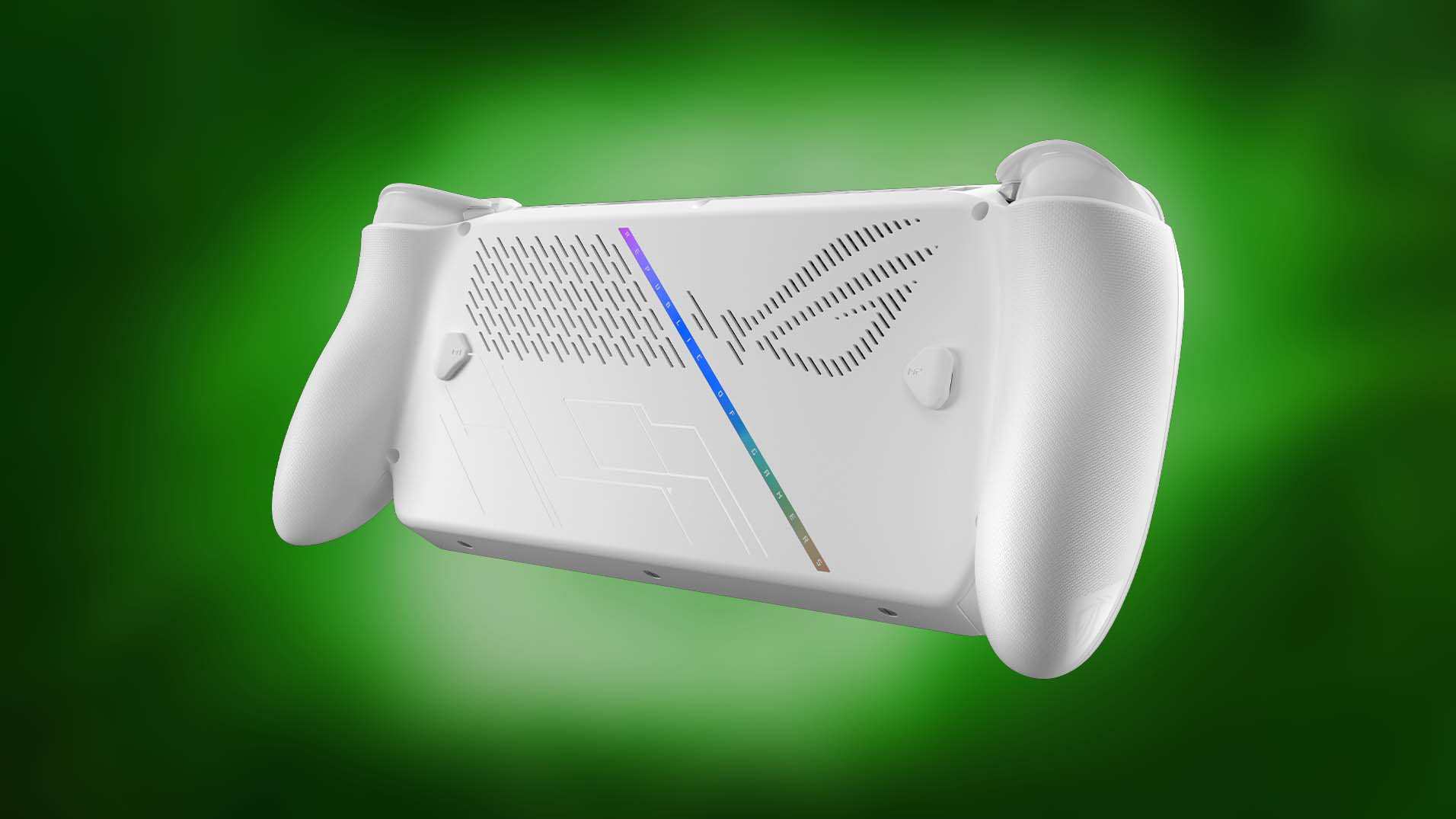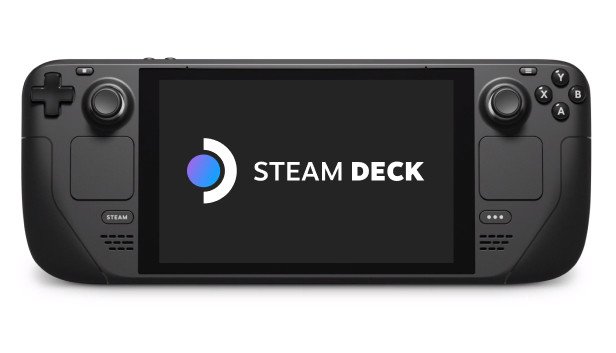Xbox Ally vs Steam Deck — Which is the better gaming handheld?
The Xbox Ally has a processor that's very similar to the one used in the Steam Deck, but which is the better handheld?
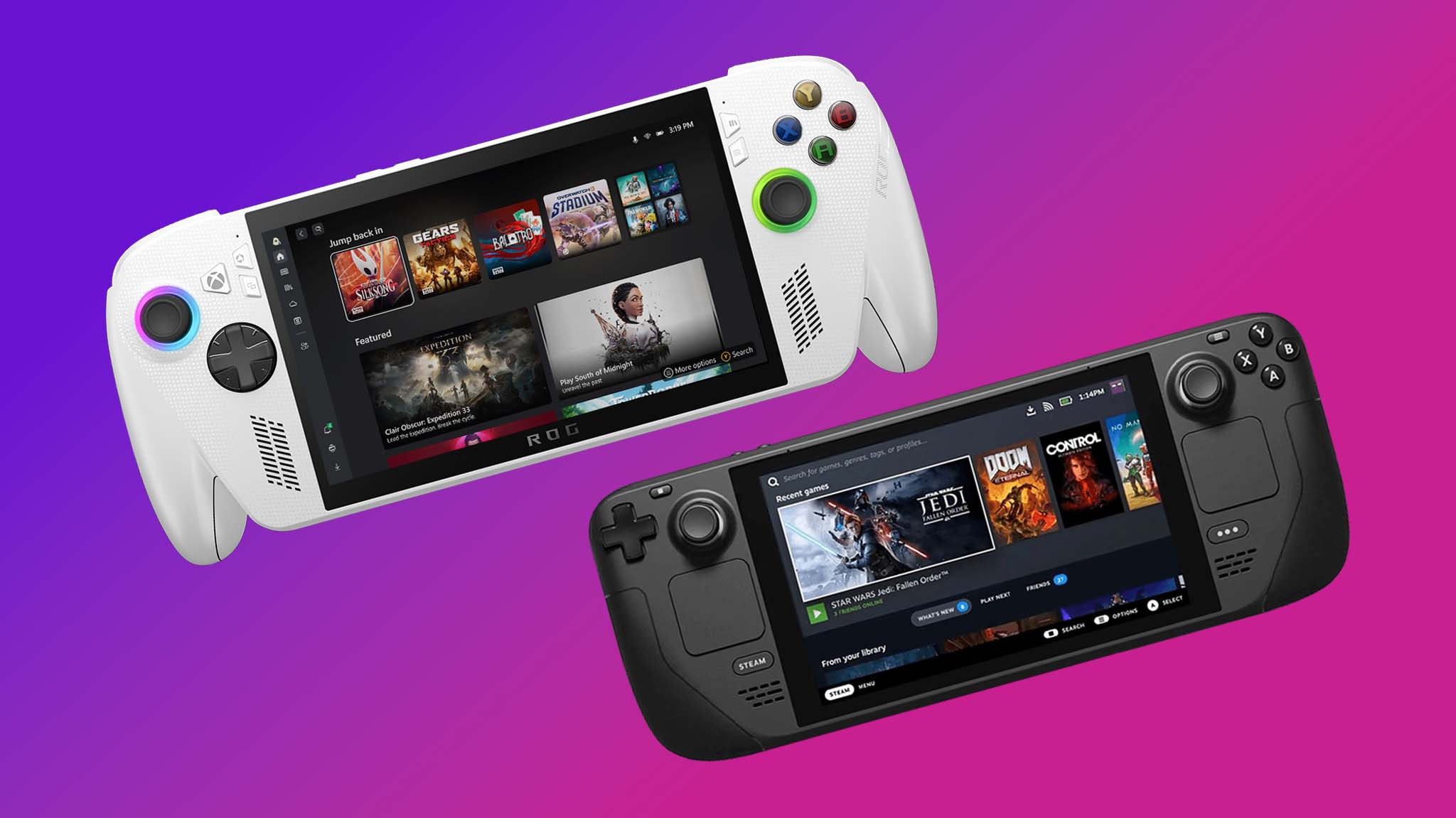
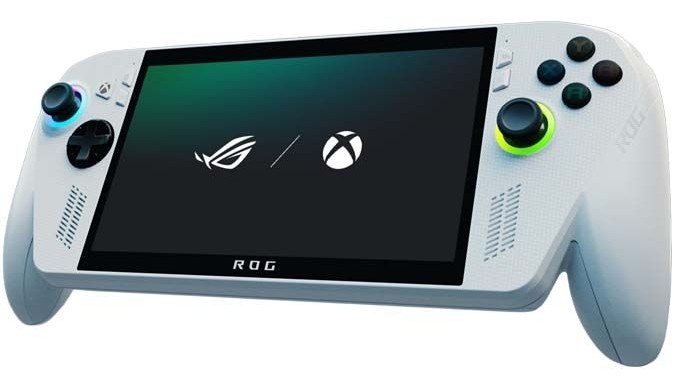
The ROG Xbox Ally is a Windows 11 device that comes with a 7-inch IPS touchscreen that supports VRR and up to 120Hz. The base configuration comes with an AMD Z2 A processor (that is similar to the Steam Deck's APU), 16GB RAM, and 512B SSD, but you can also get the Ally X configuration with an AMD AI Z2 Extreme, 24GB RAM, and 1TB SSD. Its grips are far more pronounced and make this handheld easier to hold for long stretches.
Pros
- Better grips
- Features Xbox interface that can reduce Windows power consumption
- Larger battery capacity
- 7-inch touchscreen supports up to 120Hz and VRR
- Offers two USB-C ports
Cons
- Doesn't have an OLED
- Costs the same as the Steam Deck OLED
- No Hall effect joysticks
- No touchpad

The Steam Deck is a bit older now, but its AMD processor is rather similar to the one in the base Xbox Ally. It runs SteamOS rather than Windows, and many people prefer its console-like simplicity. The LCD model features a 7-inch display that reaches 60Hz. There's also a nicer OLED option with a 7.4-inch display that reaches 90Hz. The LCD model is currently one of the most affordable PC gaming handhelds on the market. Many people also like having the two touchpads, even with the inline joystick design.
Pros
- Has two touchpads
- Available with LCD or OLED display
- Active community with plenty of users
- Runs SteamOS
Cons
- Not as ergonomic
- Joysticks aren't offset or Hall effect
- Smaller display with lower refresh rate, resolution
- Only one USB-C port
- Doesn't support VRR
The Steam Deck kicked off a PC gaming handheld revolution when Valve launched the device on February 25, 2022, but since then, several other handhelds have come to market, including the ROG Xbox Ally (Xbox Ally), announced at Xbox Games Showcase 2025.
It's worth noting that the Steam Deck has an LCD model and two OLED models. Meanwhile, the Xbox Ally is a base model, but there is also a more powerful Xbox Ally X with more premium specs.
RELATED: Xbox Ally review | Xbox Ally X review | Steam Deck review
Even though the Steam Deck and the base Xbox Ally were created a few years apart, they have a lot more in common than you might initially expect.
I've taken time to compare their specs, displays, controls, operating systems, and batteries to see which one comes out on top. Here's what I've learned.
UPDATED Oct 16, 2025: I've updated this entire article with information I gathered while reviewing the Xbox Ally.
Xbox Ally vs Steam Deck: Specs
Before we dive into comparisons, take a look at the specs for the two Xbox Ally models and three Steam Deck models.
| Header Cell - Column 0 | Xbox Ally | Xbox Ally X | Steam Deck LCD | OLED |
|---|---|---|
Price | $599.99 | $999.99 (X) | $399.00 (LCD) | $549.00 (OLED) |
Release date | Oct 16, 2025 | Feb. 25, 2022 | Nov. 16, 2023 (OLED) |
OS | Windows 11 Home | SteamOS |
Processor | AMD Ryzen Z2 A | AMD Ryzen AI Z2 Exteme (X) | AMD Zen 2 CPU 4c/8t 7nm | AMD Zen 2 CPU 4c/8t 6nm process (OLED) |
Storage | 512GB M.2 2280 SSD | 1TB M.2 2280 SSD (X) | 256GB | 512GB, 1TB (OLED) |
Memory | 16GB LPDDR5X-6400 | 24GB LPDDR5X-8000 (X) | 16GB LPDDR5 5500MHz | 16GB LPDDR5 6400MHz (OLED) |
Display | 7-inch FHD (1920 x 1080) 16:9 IPS touchscreen, 120Hz, 500 nits | 7-inch 1280 x 800 LCD touch, 60Hz | 7.4-inch 1280 x 800 OLED touch, 90Hz |
VRR | Yes | No |
Touchpads | No | Yes |
Ports | 2x USB-C 3.2 Gen 2, 1x UHS-II microSD card reader, 1x 3.5mm headphone jack | 1x USB4 Type-C, 1x USB-C 3.2 Gen 2, 1x UHS-II microSD card reader, 1x audio jack | 1x USB-C, 1x microSD card reader, 1x audio jack |
Connectivity | Wi-Fi 6E + Bluetooth 5.4 | Wi-Fi 5 + Bluetooth 5.0 | Wi-Fi 6E + Bluetooth 5.3 (OLED) |
Dimensions | 11.44 x 4.78 x 1.98 (290.8 x 121.5 x 50.4mm) | 11.02 x 4.37 x 0.97 inches (28.0 x 11.1 x 2.47mm) (X) | 11.7 x 4.6 x 1.9 in (298mm x 117 x 49mm) |
Weight | 1.47 lbs (670g) | 1.57 lbs (715g) (X) | 1.47 lbs (669g) | 1.41 lbs (640g) (OLED) |
Battery life | 60Whr | 80Whr (X) | 40Whr | 50Whr (OLED) |
Now that you've had a look for yourself, I'll dive into different areas and discuss what each device's features and specs mean for you as a handheld owner.
Because they are the most similar, I'll largely compare the white Xbox Ally (Z2 A) to the Steam Deck, rather than comparing the more premium Xbox Ally X (AI Z2 Extreme) to Valve's handheld models.
Xbox Ally vs Steam Deck: Price
PRICE WINNER: The starting Steam Deck LCD is the most affordable device. But the Xbox Ally is more comparable to the 512GB Steam Deck OLED, and the two are priced similarly. They offer tradeoffs, though. If you want a nicer display and touchpads go for the Steam Deck. If you want higher resolution and better grips, go for the Xbox Ally.
Since it launched, the Steam Deck has basically been able to keep its crown as the most affordable PC gaming handheld. The reason for this is that other handhelds have typically had nicer specs and better screens than the Steam Deck, thereby raising their prices.
Currently, you can order a Steam Deck LCD with 256GB SSD for $399.00, a Steam Deck OLED with 512GB SSD for $549.00, or a Steam Deck OLED with 1TB SSD for $649.00 at Steam.
Meanwhile, the Xbox Ally with its Z2 A process, 16GB RAM, and 512GB SSD sells for $599.99; and the Xbox Ally X with its AI Z2 Extreme processor, 24GB RAM, and 1TB SSD sells for $999.99.
As you can see, the Steam Deck LCD is the most affordable handheld of the lot. Meanwhile, Xbox Ally's specs are most akin to the 512GB Steam Deck OLED, but Valve's handheld is $50 less and has the OLED display. Just note that the Xbox Ally offers other nice features, including a higher refresh rate, higher resolution, and better grips.
The Xbox Ally launched on Oct 16, 2024, and is currently available at major tech retailers like Best Buy.
Xbox Ally vs Steam Deck: Performance and storage
PERFORMANCE WINNER: This is somewhat of a tie, but with tradeoffs. The white Xbox Ally's processor is comparable to the processor in the Steam Deck LCD and Steam Deck OLED, so their performance tends to be relatively similar, but it can vary with certain games that haven't been optimized for SteamOS.
The base Xbox Ally (the white one) is more comparable to the Steam Deck LCD and Steam Deck OLED than you might initially think.
Both the LCD and OLED versions of the Steam Deck utilize an AMD APU (accelerated processing unit) based on Zen 2 and RDNA2 architecture.
In June 2025, AMD released the specs on the Z2 A APU found in the Xbox Ally, and this is how we learned that it is actually also based on the rather old AMD Zen 2 and RDNA2 architecture that the Steam Deck's APU uses (thanks, PC Gamer).
Processor | CPU Cores & Threads | GPU Cores | TDP |
AMD Ryzen AI Z2 Extreme (Xbox Ally X) | 8 cores, 16 threads w/ XDNA2 NPU (Zen 5) | 16 CU (RDNA3.5) | 15-35W |
AMD Ryzen Z2 A (Xbox Ally) | 4 cores, 8 threads (Zen 2) | 8 CU (RDNA2) | 6-20W |
Custom AMD APU (Steam Deck LCD) | 4 cores, 8 threads (Zen 2) | 8 CU (RDNA2) | 4-15W |
Custom AMD APU (Steam Deck OLED) | 4 cores, 8 threads (Zen 2) | 8 CU (RDNA2) | 4-15W |
What this means is that the Steam Deck LCD, Steam Deck OLED, and base Xbox Ally offer very similar APU performance to each other. Something to note is that despite this, game performance can differ between Steam Deck and Xbox Ally, depending on whether or not a game has been optimized for SteamOS. If a game hasn't been optimized there is potential for it to work better on Xbox Ally, but it varies from game to game.
Of course, there are also other component differences to consider.
For one thing, the Steam Deck does not support VRR (variable refresh rate), but the Xbox Ally does. As such, game visuals likely have smoother motion clarity on the Xbox Ally screen, but only if the game doesn't run choppy on the Z2 A processor to begin with.
System performance can also be affected by memory and storage capacities. Having more memory can help the system access game file data faster, resulting in quicker load times.
Meanwhile, having more game storage space means that you don't have to rearrange, delete, or archive data as much. Additionally, if a handheld's storage is too full, it can slow the system down, so it's better to have a larger SSD for gaming.
The Xbox Ally's 16GB LPDDR5X RAM and 512GB SSD are respectable capacities for a gaming device. This makes the ROG Xbox Ally most comparable to the Steam Deck OLED 512GB (and its 16GB LPDDR5 RAM).
What it really comes down to is that the Steam Deck plays certain games better than Xbox Ally, and then the Xbox Ally plays certain non-Steam Deck optimized games better than the Steam Deck.
Xbox Ally vs Steam Deck: Display
DISPLAY WINNER: There are some tradeoffs here. The Xbox Ally's 7-inch IPS display has higher resolution, a higher refresh rate, and supports VRR. So, it's a better gaming display overall, even if it isn't an OLED.
The Xbox Ally has a 7-inch IPS touchscreen that reaches up to FHD (1920 x1080) resolution, offers up to a 120Hz refresh rate, and supports VRR (variable refresh rate).
Meanwhile, the Steam Deck LCD has a 7-inch touchscreen with lower 1280 x 800 resolution, and only offers up to 60Hz. The Steam Deck OLED has a 7.4-inch touchscreen with the same low 1280 x 800 resolution, but a slightly higher 90Hz. Neither supports VRR.
This being the case, the Xbox Ally display's features provide crisper detail and better motion clarity than the Steam Deck LCD or Steam Deck OLED screens.
RELATED: IPS LCD vs OLED vs tandem OLED vs QD-OLED vs QLED vs AMOLED vs Mini LED: Which is the best display?
Of course, the Steam Deck OLED has a much nicer color gamut, true black point, and contrast than the Xbox Ally's display. Still, when it comes to gaming, motion clarity and crisp detail are more important, in my opinion.
That all said, it would have been nicer if the Xbox Ally had an OLED option. I'm guessing that if the Xbox Ally sells well, we will see an Xbox Ally OLED down the line.
Xbox Ally vs Steam Deck: Buttons, joysticks, and grip
CONTROLS AND GRIPS WINNER: The Xbox Ally has an Xbox controller-like layout with far more comfortable grips. However, the Steam Deck offers two touchpads for added control in certain games. I prefer the Xbox layout, but both options are good for specific use cases. If nothing else, the more pronounced grips give the Xbox Ally an edge when it comes to ergonomics.
In some ways, you can compare the Xbox Ally's button layout to an Xbox controller and the Steam Deck's layout to a PlayStation controller.
The Xbox Ally has offset joysticks, large ABXY buttons, bumpers, triggers, a D-Pad, and a dedicated Xbox button. Many people find the offset joysticks far more comfortable to use than the PS5 or Steam Deck's inline joysticks.
However, the Steam Deck does have those two haptic touchpads under either joystick, and this gives players more minute control in FPS games or game menus.
In the end, you'll have to determine whether the kinds of games you play would benefit more from touchpads or not. Some do, some don't.
Now, let's discuss grips and hand comfort. Some people absolutely love the Steam Deck grips, but others find the device too clunky and uncomfortable.
Meanwhile, the Xbox Ally has far more pronounced grips than most other mainstream PC gaming handhelds on the market. Due to this, it's more comfortable to hold for longer gaming sessions.
Xbox Ally vs Steam Deck: Compatible games & Operating system
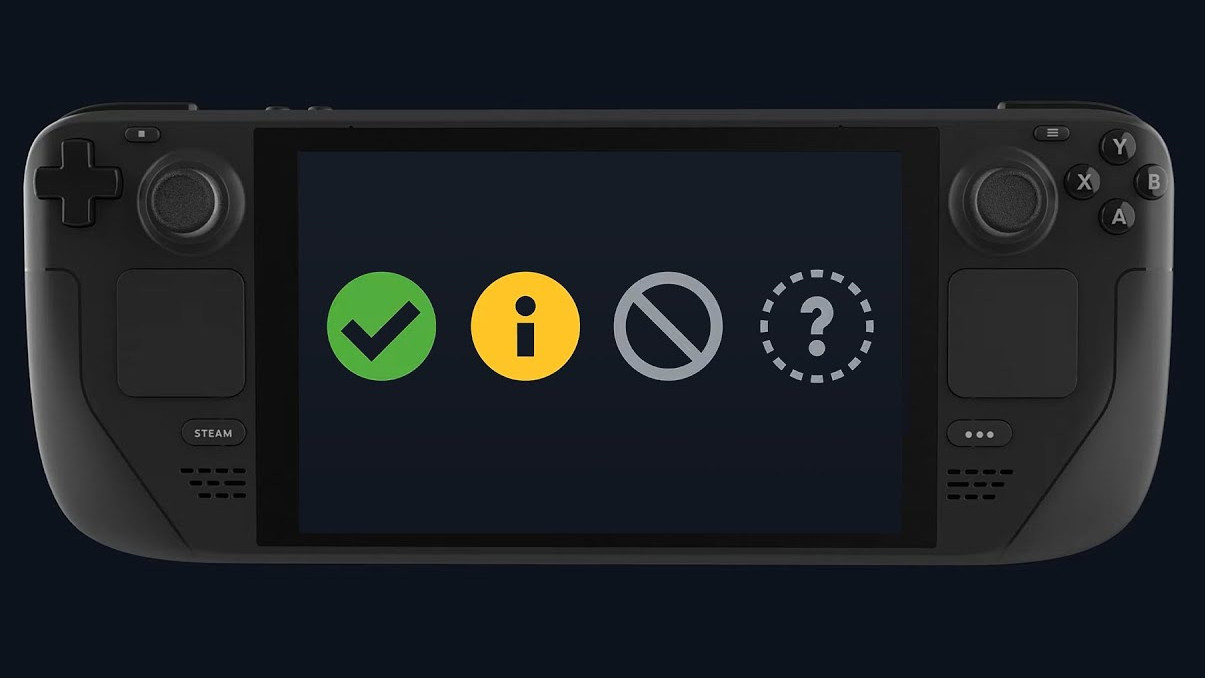

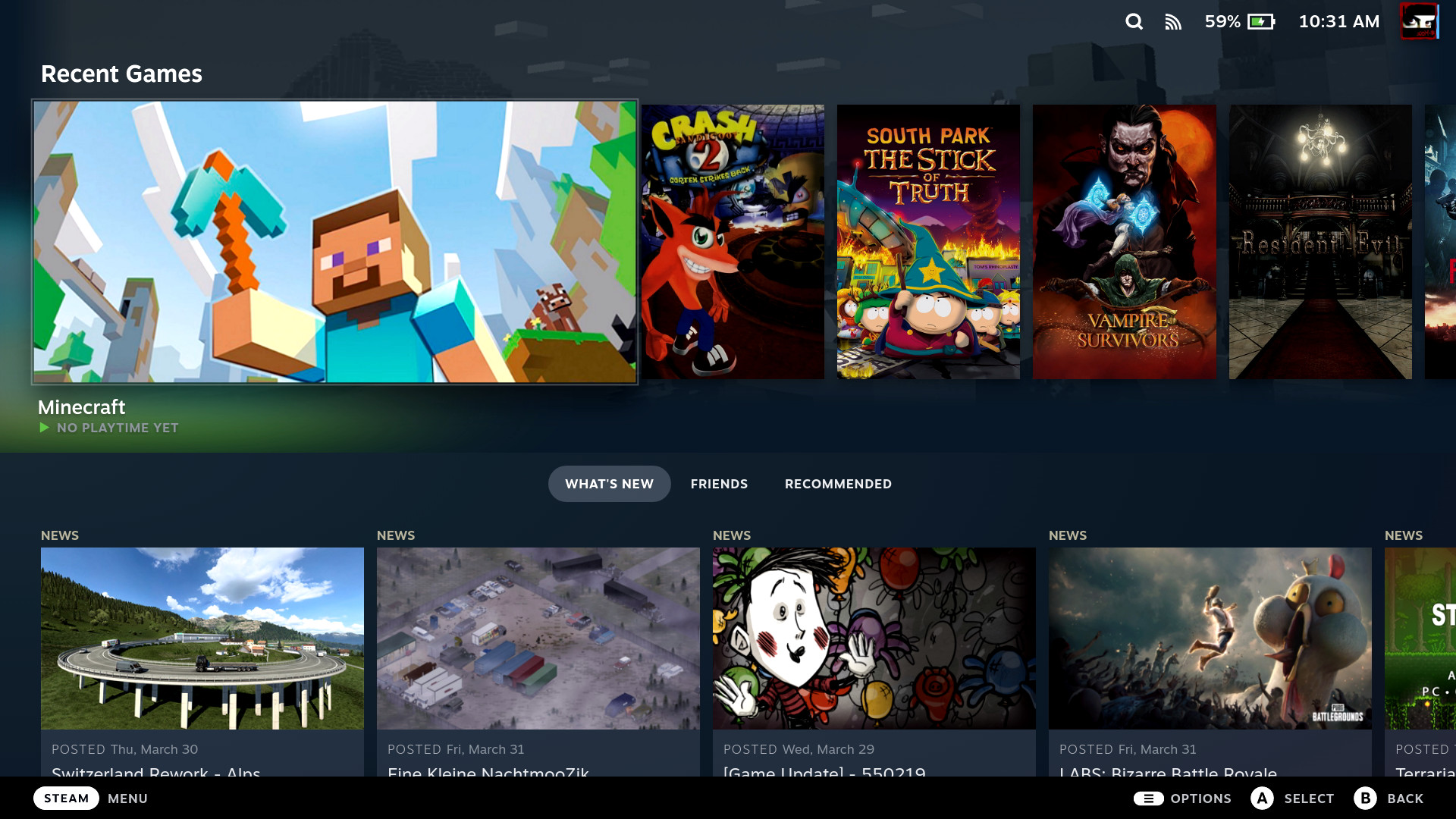
SOFTWARE WINNER: This will depend on your preferences. If you want a device that behaves more like a console, you'll want the Steam Deck with its simple SteamOS interface. However, if you want a device that gives you the freedom of a Windows laptop, then the Xbox Ally will be the better choice.
One of the biggest differences between these handhelds is that the Steam Deck runs the Linux-based SteamOS while the Xbox Ally runs Windows 11.
Many people prefer to use SteamOS because it offers a simplified interface that feels a lot like using a console. Meanwhile, Windows 11 handhelds behave more like laptops, which means they offer more freedom right out of the box, but they can be more difficult to navigate.
For instance, upon opening your Xbox Ally, you can open a browser tab and access Steam, Epic Game Store, Battle.net, and much more. But the Steam Deck is tied more directly to your Steam account.
Now, the Xbox Ally introduces a new "Xbox full screen experience," which minimizes some background Windows tasks and turns others off completely while you game. It was also designed to feel more like a console menu, but it isn't as nice as SteamOS. You can easily exit this mode to go to full Windows 11 and use the device like a normal PC.
If you want to access various gaming services other than Steam on a Steam Deck, you'll need to install and use Decky Loader or something similar.
Any Linux enthusiast will tell you that SteamOS offers a lot of freedom, and this is true as long as you know how to use it. Fortunately, there are numerous tutorials and helpful videos available to assist you in customizing your SteamOS device.
Of course, you could always put SteamOS on your Windows PC gaming handheld, if you want to.
Xbox Ally vs Steam Deck: Battery life
BATTERY WINNER: Despite the Xbox Ally having a larger battery capacity, the Steam Deck OLED is more efficient and can last longer in play sessions.
One of the biggest struggle areas for gaming handhelds is battery life. Most of these devices really don't last all that long, especially not when running graphically demanding or processor-intensive titles.
Typically, the Steam Deck has been found to last between two and eight hours, depending on system settings and the kinds of games being played.
The Xbox Ally has a 60Whr battery, whereas the Steam Deck LCD has a 40Whr battery, and the Steam Deck OLED has a 50Whr battery.
But battery capacity isn't the only determining factor for a handheld's battery life. Your device will run longer if it's on lower settings, playing simpler games, and if the device is designed more efficiently. It turns out the Steam Deck tends to last longer than the Xbox Ally while playing certain games.
I was able to get around seven hours and six minutes of playtime out of the Xbox Ally while playing the 2D pixel-art platformer, Celeste, which is still very good, though.
Honestly, if you want your handheld to last longer, you might want to invest in one of the best power banks for ROG Ally or one of the best Steam Deck power banks.
Xbox Ally vs Steam Deck: Which should I buy?
BEST OVERALL: This will largely come down to a matter of preference, but for most people, the OLED display, longer battery life, lower price, and simple SteamOS interface make the Steam Deck OLED or Steam Deck LCD the more appealing choice. If you value higher refresh rates, higher resolution, and ergonomic grips, you should consider the Xbox Ally.
There are several tradeoffs when considering the Xbox Ally against the Steam Deck. However, the Steam Deck remains a more appealing choice overall. This is due to its lower price point, OLED display, touchpads, and, of course, the SteamOS interface that feels far more console-like and easy to navigate.
Now, that's not to say that the Xbox Ally is a bad handheld, but the Xbox full-screen experience isn't as convenient as SteamOS, and many people find Windows frustrating to navigate on handhelds, even with Microsoft's recent handheld optimizations. However, the Xbox Ally does offer a higher refresh rate, a higher resolution, VRR, and those comfortable grips, so if those are more appealing to you, it's a handheld to consider.
All the latest news, reviews, and guides for Windows and Xbox diehards.

Self-professed gaming geek Rebecca Spear is one of Windows Central's editors and reviewers with a focus on gaming handhelds, mini PCs, PC gaming, and laptops. When she isn't checking out the latest games on Xbox Game Pass, PC, ROG Ally, or Steam Deck; she can be found digital drawing with a Wacom tablet. She's written thousands of articles with everything from editorials, reviews, previews, features, previews, and hardware reviews over the last few years. If you need information about anything gaming-related, her articles can help you out. She also loves testing game accessories and any new tech on the market. You can follow her @rrspear on X (formerly Twitter).

